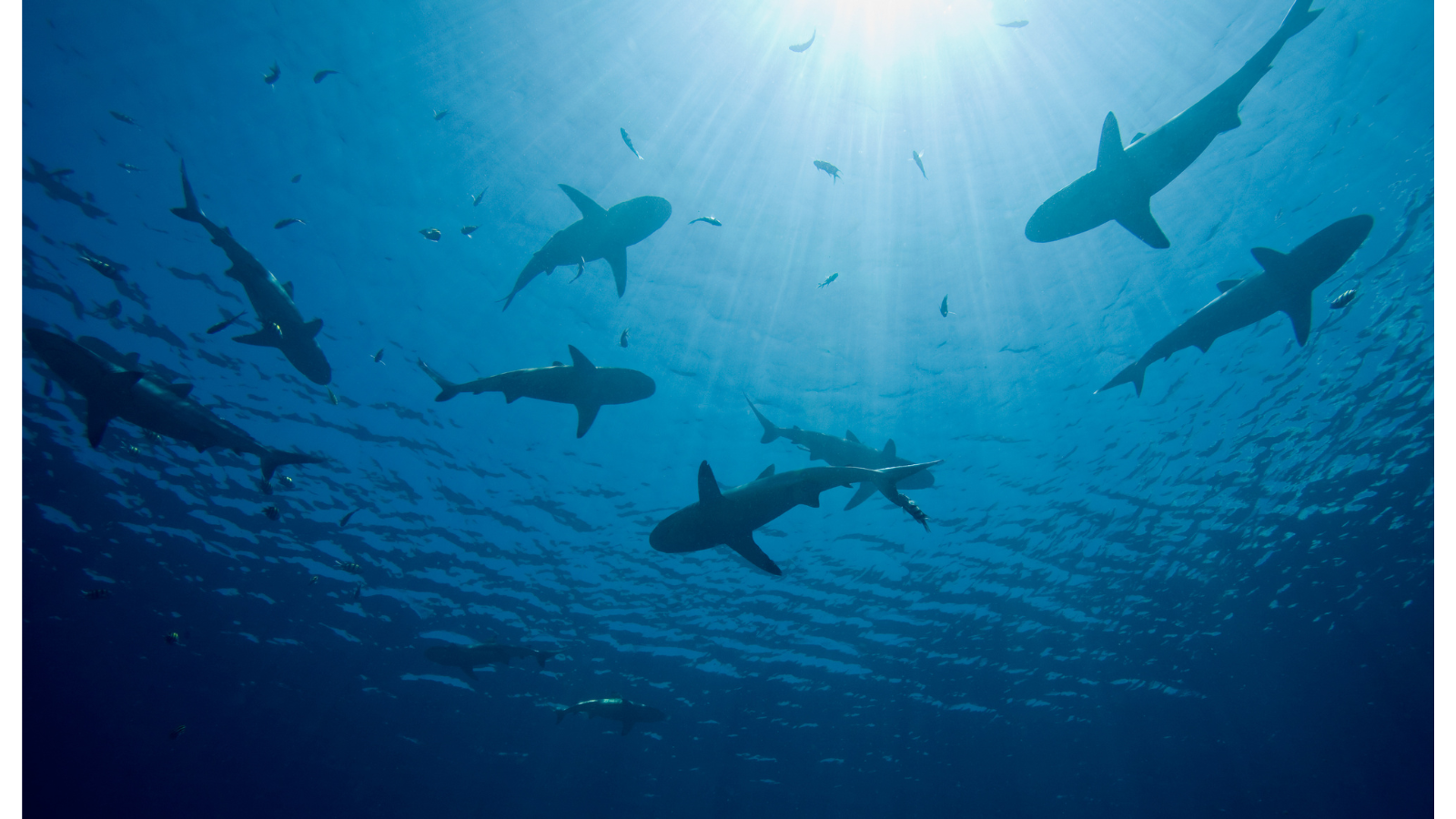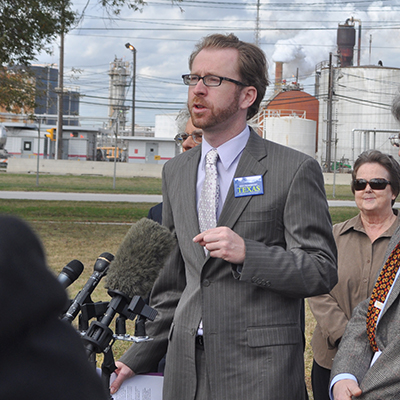
Camping in Texas with an Electric Vehicle
It’s already possible, but with new charging stations planned across Texas, it’ll soon be much easier

My family is working to visit all 89 state parks in Texas. We’ve been to about half so far, but with our recent switch to an electric car, we’ll have to do a bit more planning to hit the rest.
Our first trip in our Chevy Bolt EUV (with a roof rack and cargo box newly installed to carry our gear) was in November to old favorites Garner and Lost Maples State Parks. Only one state park – McKinney Falls in Austin – currently has charging stations, but we had booked camping sites with electricity, so we knew we could get a slow charge while there (we had charged our old plug-in hybrid Chrysler Pacifica at the 120 volt outlets at campsites many times before).
Getting to the parks took some extra steps though. We drove from Austin to San Antonio, where we stopped at a fast charger outside a Wal-Mart. There were open chargers when we arrived, so we didn’t have to wait to plug in. We got dinner and took a bathroom break and by the time we were done (about 45 minutes), our car was back to a full charge.
When we arrived at Garner, we proceeded to plug in the car. We looked to confirm it was charging, only to see “Unable to Charge” ominously on the car display. Panic ensued. We were counting on the campsite electricity to get us enough charge to get to Lost Maples two days hence and enough to get us back to the San Antonio charging station on the way back home.
Thankfully we had cell service and with a quick look at the owners manual, learned that “if the vehicle consistently stops charging after plugging in, or if a circuit breaker continues to trip, reducing the Level 1-120V Cord Limit may resolve the issue. The Level 1-120V Cord Limit should be configured to match the electrical current rating for the electrical outlet that the charge cord is connected to.” On the car display settings, we were easily able to change the Level 1-120V Cord Limit settings from a AC Current limit of 12 amps to 8 amps, and that did the trick (if that sounds technical and complicated and you’re ready to give up already – don’t fear, it really was easy!).
The campsite outlet added about 4 miles of range per hour of charging. That was enough, but it meant we had to be mindful about unplugging it for long periods in order to drive to a trailhead for a hike. After two wonderful days at Garner, we drove to Lost Maples for another two days, and then got back to the San Antonio charging station with 100 miles of range to spare.
So Garner was possible, but only because of that fast charger on the way. Many state parks are pretty far from the nearest level three charging station. We might be able to make it by finding the more abundant level two stations, but that would turn an hourlong pitstop into a multiple hour slog, rendering a quick weekend camping trip unviable.
Thankfully the outlook for camping with an EV (in Texas and across the country) is bright. The bipartisan infrastructure law invested $7.5 billion to create a national electric vehicle charging network (called NEVI). Once completed, there will be a fast charger at least every fifty miles along an interstate and one in every county. Texas will receive $408 million over five years and will likely start construction on the first 30 new charging stations this spring or summer (check out the full plan). That will help a lot, guaranteeing a fast charger not far from wherever you want to go. Tesla opening up its network to many non-Tesla vehicles is also a big deal.
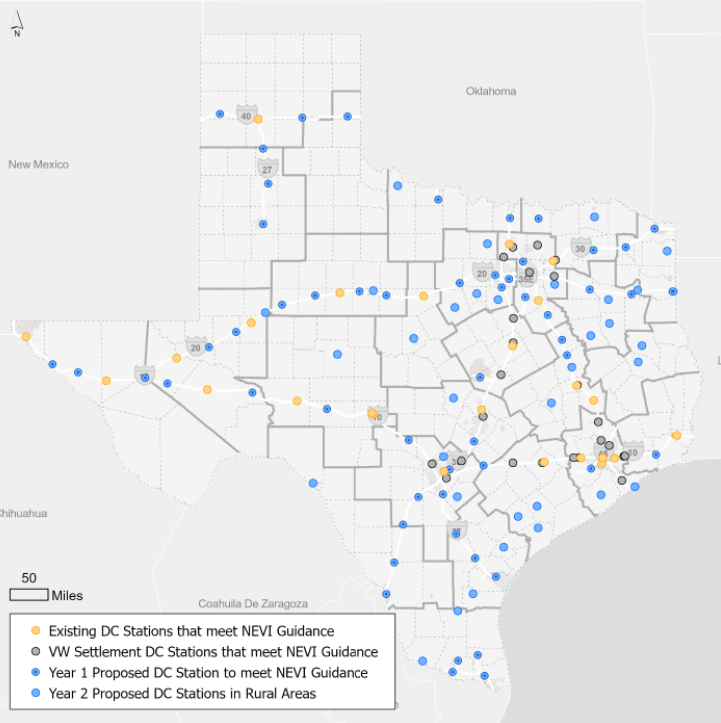
Map of EV charging stations to be installed in the next few yearsPhoto by TxDOT | Public Domain
But even better for us parks enthusiasts would be installing charging stations in every state park (less expensive level 2 charging stations would work fine). Then we could charge our cars while we camp, saving some time on the trip home. There are already 245,000 EVs registered in Texas and ERCOT expects that number to hit one million by 2028. Many EV drivers are fans of the Great Outdoors and the Texas Parks and Wildlife Department (TPWD) should work to accommodate them. Just as we made improvements to parks to accommodate RVs as they became popular in the 60s and 70s, we should do the same for EVs. Adding charging stations would also be consistent with the department’s mission to help conserve the state’s natural resources, reducing harmful air pollution in our parks by encouraging people to bring emissions-free vehicles.
Colorado, Georgia, West Virginia and other states each have charging stations in numerous state parks. TPWD should develop and implement a plan to install charging stations in all our parks. TPWD could ask TxDOT to install some of the phase 2 stations (where every county gets one) in our state parks. In some of our rural counties, where better to install them than the state parks bringing in thousands of tourists each year? We could also potentially use revenue from existing sales taxes on sporting goods and seek out donations from private companies (e.g. Tesla donated charging stations to 50 parks in Canada).
Let’s save our sweat for the hiking trail rather than worrying whether we can get to the park and home in the first place. In the second century of our state parks system, we need to prepare for the EV revolution and make sure all Texans can access our beautiful state parks.
Topics
Authors
Luke Metzger
Executive Director, Environment Texas Research & Policy Center
As the director of Environment Texas, Luke is a leading voice in the state for clean air, clean water, clean energy and open space. Luke has led successful campaigns to win permanent protection for the Christmas Mountains of Big Bend; to compel Exxon, Shell and Chevron Phillips to cut air pollution at three Texas refineries and chemical plants; and to boost funding for water conservation and state parks. The San Antonio Current has called Luke "long one of the most energetic and dedicated defenders of environmental issues in the state." He has been named one of the "Top Lobbyists for Causes" by Capitol Inside, received the President's Award from the Texas Recreation and Parks Society for his work to protect Texas parks, and was chosen for the inaugural class of "Next Generation Fellows" by the Robert S. Strauss Center for International Security and Law at UT Austin. Luke, his wife, son and daughter are working to visit every state park in Texas.
Find Out More
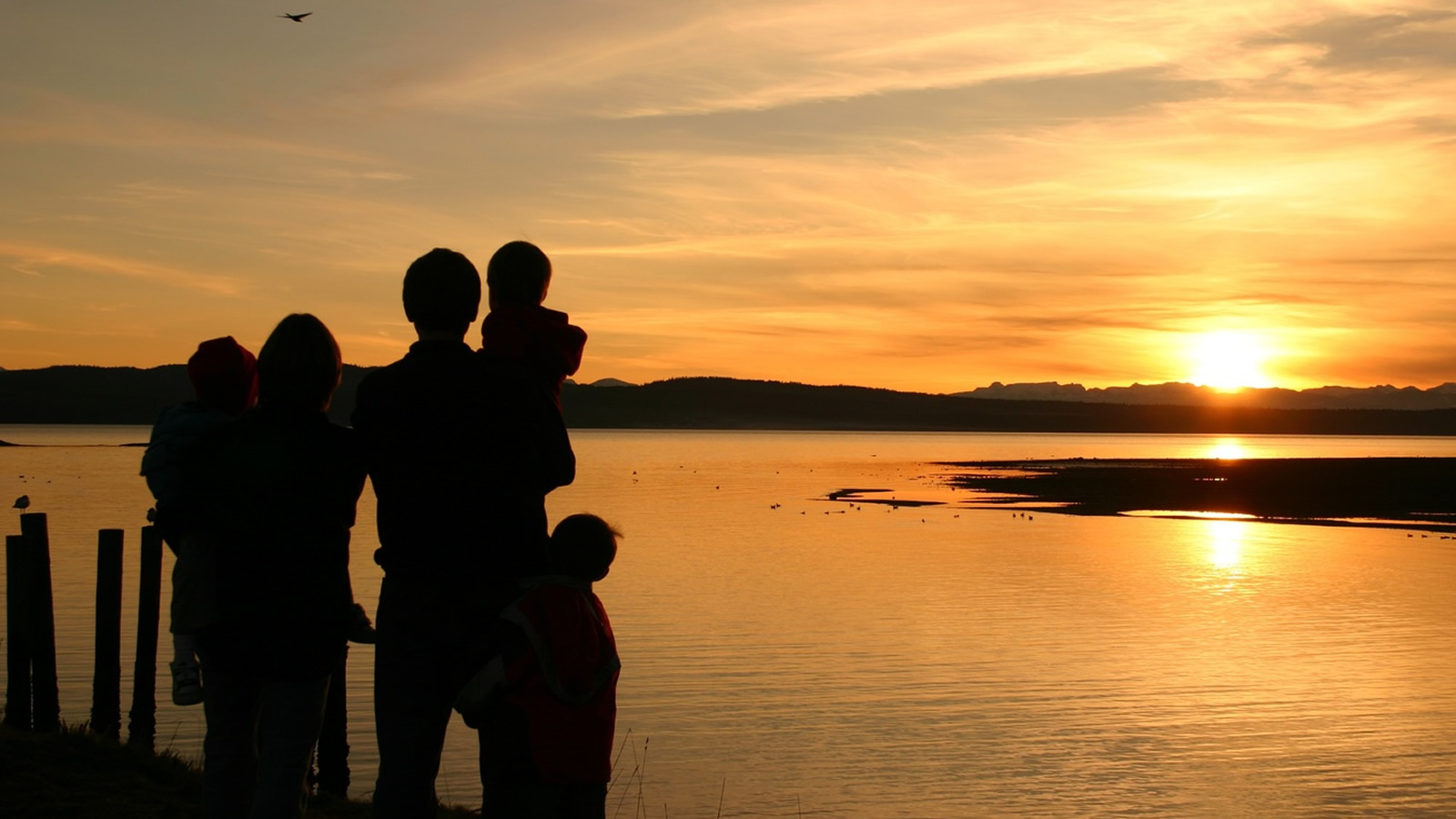
Progress Report: President Biden’s First 100 Days
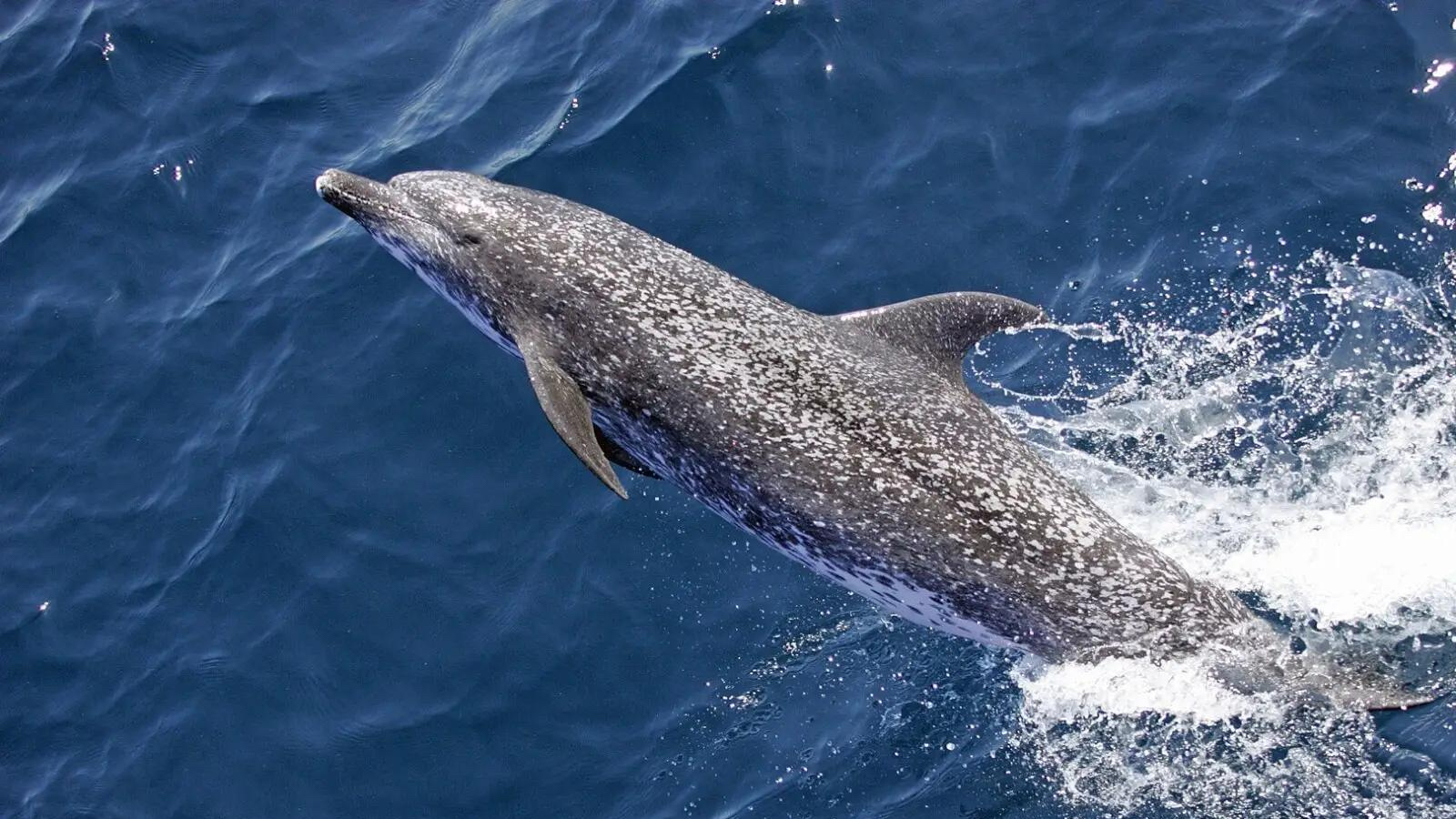
Dolphins of the Gulf of Mexico
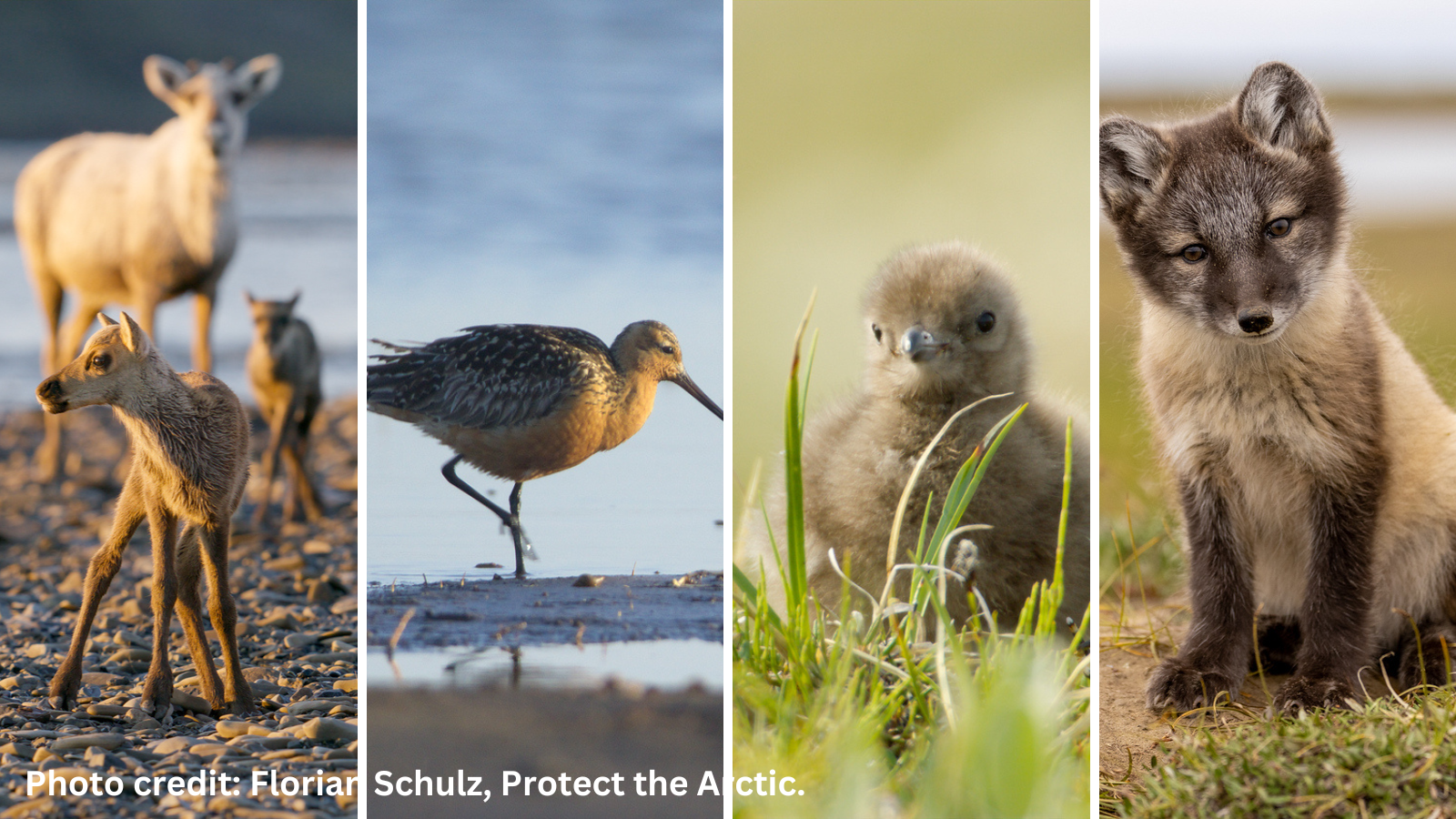
Why Alaska’s NPR-A, site of the Willow Project, deserves protection
